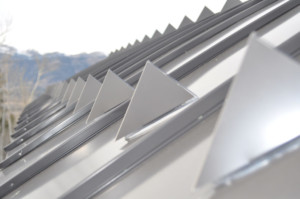Time To Start Your Project: How To Get The Easiest Snow Guard Installation
You have done your measurements, and you have ordered the right amount of guards for your particular project, which means it is time to get to work installing your guards. Proper installation is not hard, but you need to take your time and pay attention to your work to make sure that things run smoothly. [...]
Common Snow Guard Installation Mistakes: Tips For Avoiding Costly Errors
To avoid the high cost of having someone else install a snow guard system, many homeowners opt to do the project themselves. The process is pretty easy and straightforward, and if the homeowner has some background in minor repairs, the project should go off without a hitch; however, there are still some common mistakes that [...]
Calculating The Number Of Guards You Need: Numbers You Should Have Handy
Once you have made the decision to make your home a safer place by installing snow guards to keep large sheets of snow and ice from falling to the ground, you have to make a decision about how you want the guards installed. Paying someone else to do the work frees you up to do [...]
Keeping The Home Safe During Snowfall: Three Ways To Manage The Roof
Snowfall can cause all kinds of damage to the roof and it remains dangerous as long as it stays on top of the house. The longer the snow stays on the roof, the greater the chance that it will turn in to ice and fall in a deadly sheet, but even loosely packed snow can [...]
Rib Guards at Work
Notice how the far left panel that does not have a rib guard on the left side of the panel cleared first along with the front 2 feet, but the rest of the wet snow stays behind the rib guards. These are 4 years old and still look great!
Debunking Some Snow Guard Misconceptions: Things That Homeowners Need To Know
Snow guards are a vital part of keeping a home safe in areas where regular snowfall is a part of every winter, but there are some misconceptions that people have about those guards. Bad information leads to bad decision making, and you cannot afford to put your family or your property at risk by making [...]
Making The Case For A Modern Design: The Benefits Of Triangular Guards
Snow guards have been around for decades, but until recently there has not been a lot of change in the market. The traditional “L” shaped design was the standard for most of that time, and few people thought to challenge the status quo; however, recent innovations in snow guard technology show that the triangular design [...]
The Job Is All About The Prep: Getting Ready For A Snow Guard Installation
Happy Valentines Day! Just as all relationships require the right preparation, so do snow guard installations. Snow guards are necessary to keep your home and your family safe from potentially deadly damaging falling snow, and the guards are something that you can install on your own. Most snow guard systems are very cheap, especially because [...]
Upgrades That Can Save A Life: Three Things Your Home Needs
Accidents around the home are one of the leading causes of death in the United States for people under the age of forty. Many of the victims are children, and the deaths are caused by things that were completely preventable, if the homeowner took the initiative to make some very simple upgrades to the home. [...]



